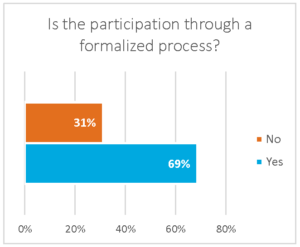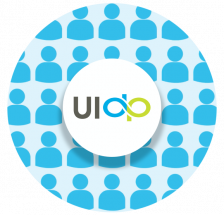1-Minute Survey | Industry Involvement in University Curriculum Development
UIDP Fellow Jim Spohrer contributed to this report.
Companies, foundations, and other organizations have a long history of working with universities to establish new and important curriculum areas, ranging from whole schools and departments to focused degrees and courses. Formal mechanisms and processes to establish new curriculum areas range from generous targeted endowments to recruiting an industry advisory board for an emerging area of expertise with practical applications. The accelerating pace of innovation is driving strong ongoing interest in this important area at increasingly large scales with multiple stakeholders (Asfaw et al, 2022).
Background
Historically, coordinated industry-government investments launched chemistry laboratories and curriculum at German universities in the 19th century and electronics, computer science, biochemistry laboratories, and curriculum at U.S. universities in the 20th century. Most business schools (e.g., MIT Sloan School) were established by industry foundation endowments. A recent example of endowment-driven research and curriculum areas include Stanford’s Doerr School of Sustainability. At the other end of the spectrum, new curriculum areas driven by industry advisory boards are often used to create new specialized degrees or even individual courses. Often, industry guest lecturers are an integral component, providing case studies of new technology applications in real-world contexts.
While universities seek to be vendor-neutral, companies often compete by donating access to technologies to establish new curriculum areas. Recent examples include vendor-specific tools for cloud computing, data science, and artificial intelligence. Industry technology donations for new curriculum areas are typically intended to close a talent gap in the labor marketplace or to encourage industry standardization around a tool with an open-source software or open-technology standard foundation. New curriculum efforts are sometimes referred to as “readiness” collaborations in industry’s 5 R’s (research, readiness, recruiting, revenue, and responsibility) model of university programs (Spohrer 2010).
Survey Results
UIDP fielded a brief survey of industry and university member representatives to gauge the extent to which corporate partners are involved in curriculum development. For the purpose of the survey, “curriculum” refers to formal university courses and the requirements that the courses need to meet in order to be counted for university credit toward a specific degree. Download the full survey results.
When asked if the company or university corporate partner participated in curriculum development, the majority (68%) said yes, although sometimes selectively. A quarter of respondents answered in the negative. A similar proportion of respondents (69%) indicated a formal process existed for curriculum development with partners.


Participants were asked to indicate which schools or curriculum areas were the focus of their efforts. Engineering and computer science received the most responses. Life sciences and business each received a single vote. The physical sciences, social science, and health care were not identified by respondents as an area where curriculum development was active.
Finally, UIDP asked if companies provided input on curricula that are also accredited by a formal body, such as the Institute of Electrical and Electronics Engineers (IEEE) or the American Chemical Society (ACS). The largest proportion of respondents (44%) did not know, while 38% said yes and 19% said this was not their experience.

References
Spohrer JC (2010) IBM’s University Programs. Industry Perspective. IEEE Computer. Pp. 102-104.RL: https://ieeexplore.ieee.org/stamp/ stamp.jsp?arnumber=5551055
Asfaw A, et al. (2022) Building a Quantum Engineering Undergraduate Program. IEEE Transactions on Education. 65(2):220-242. URL: https://ieeexplore.ieee.org/stamp/ stamp.jsp?tp=&arnumber=9705217


